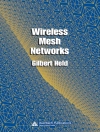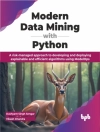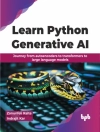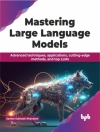The idea of soft computing emerged in the early 1990s from the fuzzy systems c- munity, and refers to an understanding that the uncertainty, imprecision and ig- rance present in a problem should be explicitly represented and possibly even – ploited rather than either eliminated or ignored in computations. For instance, Zadeh de?ned ‘Soft Computing’ as follows: Soft computing differs from conventional (hard) computing in that, unlike hard computing, it is tolerant of imprecision, uncertainty and partial truth. In effect, the role model for soft computing is the human mind. Recently soft computing has, to some extent, become synonymous with a hybrid approach combining AI techniques including fuzzy systems, neural networks, and biologically inspired methods such as genetic algorithms. Here, however, we adopt a more straightforward de?nition consistent with the original concept. Hence, soft methods are understood as those uncertainty formalisms not part of mainstream s- tistics and probability theory which have typically been developed within the AI and decisionanalysiscommunity.Thesearemathematicallysounduncertaintymodelling methodologies which are complementary to conventional statistics and probability theory.
Table des matières
Keynote Papers.- Generalized Theory of Uncertainty (GTU) – Principal Concepts and Ideas.- Reasoning with Vague Probability Assessments.- Soft Methods in Earth Systems Engineering.- Statistical Data Processing under Interval Uncertainty: Algorithms and Computational Complexity.- Soft Methods in Statistics and Random Information Systems.- On Testing Fuzzy Independence.- Variance Decomposition of Fuzzy Random Variables.- Fuzzy Histograms and Density Estimation.- Graded Stochastic Dominance as a Tool for Ranking the Elements of a Poset.- On Neyman-Pearson Lemma for Crisp, Random and Fuzzy Hypotheses.- Fuzzy Probability Distributions Induced by Fuzzy Random Vectors.- On the Identifiability of TSK Additive Fuzzy Rule-Based Models.- An Asymptotic Test for Symmetry of Random Variables Based on Fuzzy Tools.- Exploratory Analysis of Random Variables Based on Fuzzifications.- A Method to Simulate Fuzzy Random Variables.- Friedman’s Test for Ambiguous and Missing Data.- Probability of Imprecisely-Valued Random Elements with Applications.- Measure-Free Martingales with Application to Classical Martingales.- A Note on Random Upper Semicontinuous Functions.- Optional Sampling Theorem and Representation of Set-Valued Amart.- On a Choquet Theorem for Random Upper Semicontinuous Functions.- A General Law of Large Numbers, with Applications.- Applications and Modelling of Imprecise Operators.- Fuzzy Production Planning Model for Automobile Seat Assembling.- Optimal Selection of Proportional Bounding Quantifiers in Linguistic Data Summarization.- A Linguistic Quantifier Based Aggregation for a Human Consistent Summarization of Time Series.- Efficient Evaluation of Similarity Quantified Expressions in the Temporal Domain.- Imprecise Probability Theory.- Conditional Lower Previsions for Unbounded Random Quantities.- Extreme Lower Probabilities.- Equivalence Between Bayesian and Credal Nets on an Updating Problem.- Varying Parameter in Classification Based on Imprecise Probabilities.- Comparing Proportions Data with Few Successes.- A Unified View of Some Representations of Imprecise Probabilities.- Possibility, Evidence and Interval Methods.- Estimating an Uncertain Probability Density.- Theory of Evidence with Imperfect Information.- Conditional IF-probability.- On Two Ways for the Probability Theory on IF-sets.- A Stratification of Possibilistic Partial Explanations.- Finite Discrete Time Markov Chains with Interval Probabilities.- Evidence and Compositionality.- High Level Fuzzy Labels for Vague Concepts.- Integrated Uncertainty Modelling in Applications.- Possibilistic Channels for DNA Word Design.- Transformation of Possibility Functions in a Climate Model of Intermediate Complexity.- Fuzzy Logic for Stochastic Modeling.- A CUSUM Control Chart for Fuzzy Quality Data.- A Fuzzy Synset-Based Hidden Markov Model for Automatic Text Segmentation.- Applying Fuzzy Measures for Considering Interaction Effects in Fine Root Dispersal Models.- Scoring Feature Subsets for Separation Power in Supervised Bayes Classification.- Interval Random Variables and Their Application in Queueing Systems with Long–Tailed Service Times.- Online Learning for Fuzzy Bayesian Prediction.












